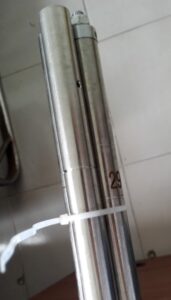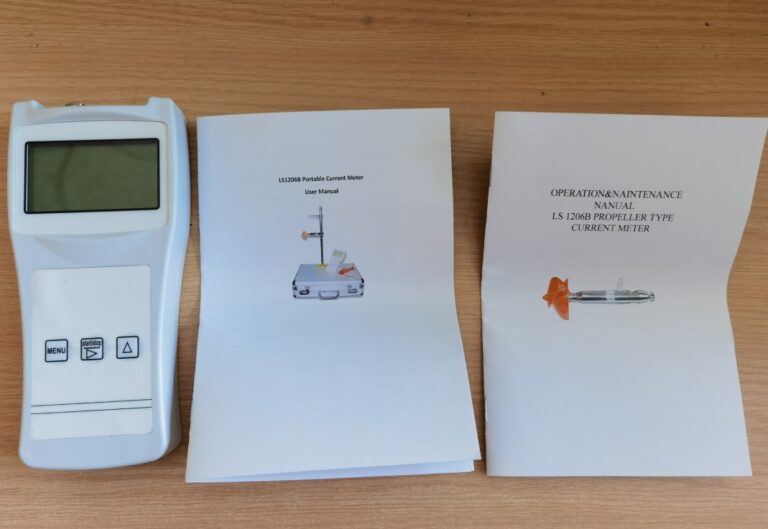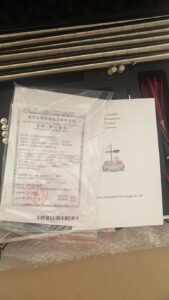LS1206B Propeller Type Current Meter is used to measure hourly average flow velocity on given points. Being light, impact and portable, this instrument applies to rivers, pipelines, irrigation and drainage channels, hydrological investigation, and runoff experiments.
Specification
- The Rotary Diameter for Propeller: Ф60mm
- The Hydraulic Thread Pitch for Propeller: H=120mm
- Minimum Velocity: Vo≤06m/s(Normal)
Vo≤0.05m/s(Premium)
- Measuring Range: 0.07~7m/s(Normal)
0.05~7m/s(Premium)
- Operational Depth: 1~1.2m(Wading rod)
- Accuracy:unbiased variance: m≤±2%(Normal)
m≤±1.0%(Premium)
V<0.2m/s:
Relative Error:σ≤±5%
- Signal: two signals on every rotary
- Operational Condition:0~35℃
- Continuous Running Time:24h
- Wading Rod(additional):
CG16-1 wading rod for open channel: 1600 mm in four sections;
Inner supporting type special wading rod for pipeline

LS1206B Propeller Type Current Meter is composed of a sensing part, signal transition mechanism, a tail fin, and a wading rod. Instruction of counter is on the last page of the text.
Sensing Part
Installed on the rotary axis at the front part of the instrument, the sensing part is a three-leaf screw propeller used to sense the flow velocity. Rotate speed of the propeller is proportional to the flow rate. The proportional constants are measured in flume testing.
Signal Transition Mechanism
The signal transition mechanism is to transform the rotating number of propellers into electrical pulse signals for counting by a magnet—reed switch. Magnet is vertically installed at the tail of the rotary axis, synchronous rotating with a propeller. Reed switch is encapsulated in a water-proof component fixed on the main body close to the magnet. When the propeller is driven by current, the magnet and propeller are rotating synchronously. Every propeller’s rotation induces two times of magnetization between the magnet and reed switch. The rotating number is transformed into signals and transmitted to the counter.
Tail Fin(Additional)
The tail fin is used to level the instrument in the open channel during flow measurement. If in shallow, and slow-rate flow, or pipelines, instruments can be leveled by eyeballing, tail fins are not necessary.
CG16-1 Type Wading Rod(Additional)
Wading Rod is used to measuring water depth, and fixed instrument at the given measuring points. There is a signal transition socket on top of the wading.
Operational Principles and Calculation
The functional relationship between flow rate and rotary speed of propeller is determined by flume testing.
Calibration formula:
V = Kn + C
V—flow rate,m/s;
K—hydraulic thread pitch of propeller,m;
n—the rotary rate of the propeller,n= N /T,1/s
( N—rotating number of the propeller; T—measuring duration);
C—instrument constant,m/s。
Flow rate actually is the average rotary rate of a propeller in a given measuring duration.








